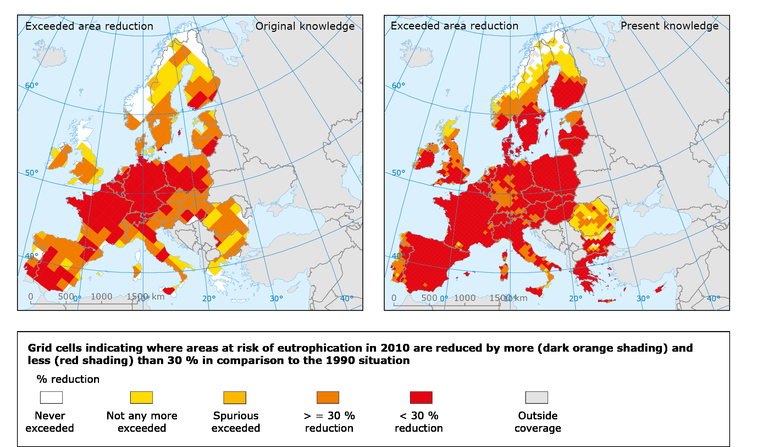The European Environment Agency (EEA) report ‘Evaluation of progress under the EU National Emission Ceilings (NEC) Directive’ considers whether the EU has successfully addressed environmental and health objectives set out when the Directive was adopted in 2001. The Directive aimed to reduce acidification of soil and freshwater, to reduce the area of ecosystems with excess nutrient nitrogen (which increase the risk of eutrophication) and to reduce exposure of humans, crops and forests to harmful ground-level ozone. These objectives should have been met by Member States limiting emissions of four important air pollutants by 2010, which would in turn reduce harm to health and the environment to agreed target levels.
“We published a report in June on the NEC Directive, showing that although the legislation has brought down emissions, broadly in line with its original objectives, there are still some problems with attainment,” EEA Executive Director Jacqueline McGlade said. “But the report we are publishing today finds that Member States have even further to catch up on air pollution when the latest science is taken into account, showing how important it is that we keep investing in knowledge.”
The ceilings to limit emissions were designed to ensure that the health and environmental objectives were met cost-effectively. There have been significant cuts in air pollutant emissions between 1990 and 2010: sulphur dioxides (-82%), non-methane volatile organic compounds (-56%), nitrogen oxides (-47%) and ammonia (-28%). Nevertheless, twelve EU Member States exceeded at least one of the ceilings agreed for these air pollutants, as documented in a report from the EEA earlier this year.
Past and present knowledge lead to different results
There are many ways of assessing whether environmental targets have been met. The new EEA report uses two different approaches to ensure that results are both impartial and objective:
Past knowledge: an assessment using the tools and approaches from the time the objectives were defined a decade ago.
Present knowledge: a state-of-the-art assessment using, as far as feasible, the latest scientific understanding, including an advanced methodology and higher resolution air quality modelling.
Using these approaches, it becomes evident that the impacts of air pollutants covered by the NEC Directive are in most cases more serious than would have been evident from using past knowledge alone.
Eutrophication: High emissions of nitrogen oxides and ammonia lead to excessive levels of nutrient nitrogen, for example in grasslands, heaths and nutrient-poor lakes. While the objective to reduce areas at risk of eutrophication was met according to past knowledge, present knowledge indicates that eutrophication caused by atmospheric deposition is still a major environmental problem.

Source: Areas at risk of eutrophication in 2010 (right) vs 1990 (left)
Acidification: The EU has the objective to halve, at least, the areas at risk of acidification between 1990 and 2010. Sulphur dioxide, nitrogen oxides and ammonia emitted to the air contribute to acidification of water and soil.
The objective has been largely met across the European Union if the old methodology is used. The risk of acidification also appears to be markedly reduced when new methods are applied, but there are still many areas of Europe where the acidification objective is not yet met. This is because the more advanced methodology takes into account the specific effects on different ecosystems, for example the higher rate of acid deposition in forests.
Ozone: Breathing high levels of ozone can cause respiratory problems and contribute to premature death. The NEC Directive’s objective to reduce human exposure to ozone has been largely met, according to both methodologies, with the exception of some parts of southern Europe, particularly northern Italy.
Ozone also damages vegetation, such as crops and forests. According to the modelling results the targets to protect crops were mostly met, even when using the newer methodology, with the exception of Spain and Portugal. However, the objective to protect forests was clearly not achieved in most of Europe, with the exception of the Nordic countries and the United Kingdom.
While the EEA’s latest report stresses the adverse effects of air pollutants on the environment, a recent EEA assessment of air quality in Europe found that approximately one third of European city dwellers are exposed to pollutants above EU limits to protect health.
Next steps
The European Commission is currently reviewing the European Union’s air policy. Amongst other initiatives, the Commission is expected to propose a revised NEC Directive in 2013 at the latest, which is likely to set objectives for 2020 and beyond for relevant air pollutants. In the meantime, the NEC Directive remains in force and requires European Union Member States to keep emissions below national ceilings beyond 2010.